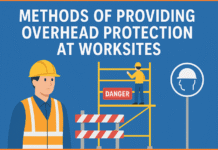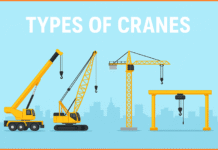Contents
Health and Safety Management: –
The systematic use of techniques to identify and remove hazards, the control of risks that remain, and the use of techniques to influence the behavior and encourage safe attitudes. This is the primary responsibility of safety management.
Practical Objectives of Safety Management: –
- Gain support from all concerned for the health and safety effort.
- Motivate, educate, and train – to enable recognition of hazards.
- Achieve hazard control by design and purchasing.
- Support inspection system to provide feedback.
- Ensure hazard control principles form part of supervisory training.
- Devise and introduce controls based on risk assessment.
- Comply with regulations and standards.
CLICK HERE FOR 
Responsibility:-
- Report all unsafe acts and conditions to the immediate supervisor.
- Start work only when conditions are safe and stop work when it is unsafe.
- Operate equipment only when authorized and prescribed manner. (If applicable)
- Report any injury or accident immediately.
- Understanding the HSE requirements of the Project from this Plan, HSE Management Systems, HSE Manual & following the same in the execution of the work.
- Ensuring the workmen under him wear the necessary personal protective equipment respective to the job.
- Eliminating all unsafe conditions in their work area.
- Know the critical activities of his job based on the Group Risk Assessment and ensure implementation of the Risk control measures.
- Participating with the HSE Engineer / Officer or the Committee Members in the Project HSE Inspection.
- To follow all work permit systems as per client requirements or HSE Management System before starting similar work.
- To report all near-miss cases / reportable LTI /dangerous occurrences/fatality to HSE Engineer immediately verbally & submitting the preliminary accident report within 12 hours.
- Informing the concerned authority as per the emergency response plan.
CLICK HERE FOR > Trailer safety at the construction site
CLICK HERE FOR > Construction Site Safety Checklist
What does Management expect from us?
- Benchmark our safety performance with that of advanced countries.
- To achieve safety performance similar to the best in the world.
- Every site engineer must also be a quality engineer and a safety engineer – three in one.
- The culture of “Safety First” must be established at our sites.
Key elements of effective safety management: –
- Commitment from Management.
- Involvement of each and every one at the site
- Encouragement and motivation to all so that everyone contributes to safety effort
- A good safety management system
- Effective implementation and enforcement
CLICK HERE FOR > How to Make Safety Plan for Construction Site.
PEP TALK / TOOL BOX TALK:-
- To make workers aware of the hazard, method of work, use of tools & tackles, PPE before the commencement of days’ work.
- Site Engineer/Site supervisor conducts PEP talk/TBT every day before the start of work.
- Workmen are enlightened on hazards of the job, precautions to be taken, case studies on previous similar accidents, usage of PPE, etc.
Training:-
- Training is an important aspect of the Safety Management function.
- Training needs are identified and the Training calendar is prepared.
- Training programs are conducted as per the schedule.
CLICK HERE FOR > ELECTRICAL SAFETY IN CONSTRUCTION SITE
Safety Inspection:-
To identify unsafe conditions / unsafe acts which may lead to accidents during the execution and suggest remedial measures.
Causes of Accidents:-
Unsafe Acts-
- Working without authority.
- Failure to warn others of danger
- Using dangerous equip.
- Using the wrong equipment
- Failure to issue control measures
- Horseplay ..etc.
CLICK HERE FOR > SAFETY PSYCHOLOGY
CLICK HERE FOR > PPE IS CODE
Unsafe Conditions-
- Inadequate or missing machine guards.
- Defective tools or equipment.
- Fire Hazards.
- Ineffective housekeeping.
- Excessive noise.
- Poor ventilation and lighting etc.
Secondary Causes-
Management System Pressures
- Financial restrictions.
- Lack of commitment.
- Lack of policy.
- Lack of standards.
- Lack of training.
CLICK HERE FOR > RADIATION SAFETY
- Social Pressures
- Group attitude.
- Trade customs.
- Tradition.
- Society attitudes to risk-taking.
- ‘Acceptable’ behavior in the workplace.
Work Permit System:
OBJECTIVE:-
To specify adequate safety measures in advance to ensure safe execution of work in the designated workplaces.
CLICK HERE FOR > Construction site near-miss case study-3
The following Work Permit Systems are used at the Site: –
- Working in a confined space.
- Carrying out hot work in a specified location.
- Giving clearance for excavation work.
- Carrying out Industrial Radiography.
- Working on P&M and other power-driven equipment.
- Carrying out electrical work (HT / LT)
- Removal of covers from manholes/openings.
Fire Prevention:-
- Fire extinguishers are provided at the required locations at the site.
- Safety Engineer familiarizes site personnel with the basic fire fighting techniques and handling of portable fire fighting equipment.
- He carries out live demonstrations on simulated fires.
CLICK HERE FOR > EXCAVATION SAFETY
Management of First aid: –
- Trained first aiders are deployed at the site.
- First aid boxes are provided at a convenient location under the charge of the first aider.
- First aid treatment is given to the injured person. If required the injured person is shifted to hospital.
- Monthly analysis of first aid cases is made by SSC and it is discussed in the site safety meeting.
Accident / Dangerous Occurrence Reporting, Investigation, and analysis:-
- All accidents & dangerous occurrences are reported, investigated & analyzed.
- Corrective and preventive actions are immediately taken based on investigation reports to avoid similar accidents in the future.
Tools used in an effective Safety Management System:-
- Formal inspections, surveys, and audits
- Risk Assessments
- Hazard Monitoring – Occupational Hygiene
- Medical/ Health Surveillance
- Fault Tree Analysis
- HAZOP/HAZAN
- Effective and Appropriate Training
- Provision of Information
CLICK HERE FOR > LIFT AND HOIST SAFETY
RISK ASSESSMENT:
Also, read this:
- Confined space safety
- Vessel entry safety procedure
- Gas cutting safety
- Manual material handling
- PPE
- Emergency response plan
- Safety plan
JSA
HIRA
PLEASE SHARE THIS ARTICLE WITH YOUR RELEVANT FRIENDS










Thanks For the admin.
I like it. Good system.
LOT OF GAIN GOT IT
Beaucoup, beaucoup
shannen
il me semble, vous vous trompez
Blonde babe has nice tattoo and, of course, sexy upskirt
Very good information
I like it
Very useful contain.. thanks admin